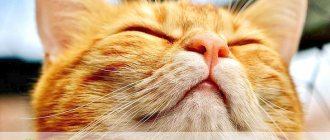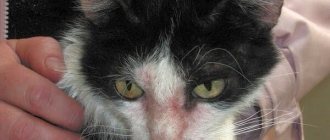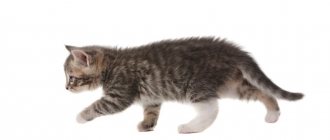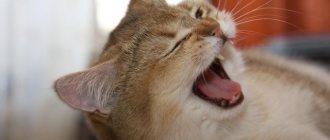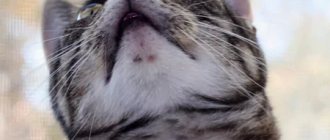Sneezing is a beneficial bodily function in which the body forcefully expels irritants from the nose. A wide variety of animal species sneeze, including dogs, chickens, elephants, some lizards, and cats.
If your cat sneezes, it may be part of a normal nose-clearing process that is not usually a cause for concern. However, if it continues for a long time or other symptoms are present, it may indicate an underlying medical condition.
Here's what you need to know about cat sneezing.
What causes sneezing?
Cat sneezing can be surprisingly difficult to diagnose for several reasons. First, your veterinarian should confirm that the cat is indeed sneezing.
Coughing, vomiting, reverse sneezing, hiccups, vomiting and wheezing can all be mistaken for sneezing, and each of these symptoms has a separate list of possible causes.
Take a video of the cat during the attack so that the doctor can be sure that it is sneezing.
Another obstacle to diagnosing cat sneezing is the variety of things that can cause it. Infections, chronic inflammation, dental disease, cancer, and inhaled foreign bodies can cause sneezing.
To further complicate matters, cats usually have several of these causes combined.
Let's look at the main reasons.
Viral respiratory infections
Viral infections of the upper respiratory tract are often the main cause. The most common infection is herpes. Some researchers estimate that 80-90% of cats are infected with the herpes virus.
Unlike in humans, the herpes virus in cats primarily causes upper respiratory complications, including sneezing and discharge from the eyes and nose. As in humans, symptoms of feline herpes are aggravated by stress.
Although new research is emerging to suggest that existing medications may improve the outcomes of cats infected with the herpes virus, there is currently no cure and the infections remain lifelong.
Other viral infections include calicivirus (for which the FVRCP combination vaccine provides protection) and influenza.
Bacterial infections
Bacterial infections almost always play a minor role in these types of symptoms.
If you see yellow or green discharge from your cat's nose or eyes, it is a sure sign of a bacterial infection.
However, in cats, these bacterial infections almost never act alone; After a respiratory virus or other disease process causes damage to the nasal passages, bacteria take advantage of the opportunity and attack.
Bordetella, mycoplasma and chlamydia are common culprits of bacterial nasal infections. Although these infections are rarely the only problem, treatment with antibiotics such as doxycycline or azithromycin will significantly reduce sneezing and other symptoms, allowing you to breathe more comfortably.
Research into the effectiveness of new antibiotics will allow your veterinarian to more easily treat these infections in the future.
Inflammation and irritation
Often sneezing is caused by the same diseases that provoke inflammation and irritation.
The above infections can certainly cause inflammation, but the same can be said for almost all other causes.
To complicate matters, the inflammation itself can cause sneezing that continues long after the initial problem has resolved. This situation is usually called chronic rhinitis.
There are no good tests to diagnose an inflammatory condition as the sole cause of sneezing in cats (with the exception of a nasal biopsy, which must be done under anesthesia). Typically, inflammation is diagnosed when all other causes disappear.
Effective treatments reportedly range from steroids and nonsteroidal anti-inflammatory drugs to drugs commonly used for nausea. There is evidence to suggest that immunotherapy may help cats with sneezing in some cases, but this is still in development.
Although allergies are inflammatory in nature, allergic rhinitis is so rare that it does not occur in domestic cats.
Foreign body
Inhalation of foreign bodies such as blades of grass, thorns, etc. may cause irritation of the nasal passages.
The body reacts to them by sneezing in an attempt to push out foreign debris, but this only works with small objects.
These situations can be diagnosed either by rhinoscopy, in which a camera is inserted into the cat's nose under anesthesia, or by nasal irrigation, in which a sterile saline solution is passed through the nasal passages (again, under anesthesia) to remove an object that the cat was unable to sneeze out.
Dental diseases
Many pet owners are surprised to learn that sneezing in cats can be caused by dental disease.
Like many other animals, the roots of the teeth in the upper jaw are located near the nasal passages. When teeth become infected or there is severe inflammation, the barrier between the tooth socket and the nose can become damaged.
When a cat eats, food can get into the nose, causing a sneeze reflex.
Treating dental disease by removing the affected tooth or closing the hole usually relieves sneezing unless the problem develops into chronic rhinitis.
This condition is usually painful, so if you suspect your cat has dental disease, a visit to your veterinarian is highly recommended.
Neoplasia (tumors)
As with most symptoms, tumors are always on the list of possible causes.
Especially in older cats, tumors can grow inside the nasal passage, causing irritation and inflammation that causes the cat to sneeze. These tumors are usually detected visually using rhinoscopy or biopsy.
If they appear, then the prognosis, unfortunately, is quite bad. It is believed that nasal tumors, like dental diseases, cause pain.
Fungal infection
Although fungal infections are less common than viral or bacterial infections, they are a known cause of sneezing in cats. The most common culprit is a fungus called cryptococcus.
Unlike viral infections, there are effective treatments for fungal nasal infections in cats. A medical examination alone will not be enough to distinguish a fungal infection from other causes of sneezing, so a rhinoscopy or biopsy is usually required to make a diagnosis.
Fungal infections in the nose can also cause pain.
Other reasons
Although other problems - polyps or abnormal growths in the nose or mouth - can cause sneezing, the above reasons are more likely.
We are looking for reasons why a cat sneezes
To understand why a cat is sneezing, you need to examine your pet and observe him for some time - this will help determine the cause of the “sneeze” and consider additional symptoms of the disease, if any.
If a cat is sneezing because his nose is clogged with something foreign, or a foreign object has gotten into it, you can easily detect it yourself and, perhaps, help your pet yourself.
A simple examination will be enough to detect a problem with the cat’s teeth or gums: they can also cause sneezing. Having discovered one, you need to go to the doctor, since you yourself will not be able to cure an ascending infection from the mouth to the nose.
If the nose is clean and the cat sneezes regularly: after eating, contact with the litter box, when the owner smokes or spraying air freshener or hairspray - it is very likely that your cat is allergic, and maybe you just need to stop smoking at home and not spray the air freshener in the presence of a cat.
If a cat begins to sneeze, and at the same time his nose is running, his eyes are watery, his temperature is elevated, he has an increased cough, the animal is lethargic and refuses to eat - the situation is alarming. Such symptoms may be signs of serious viral diseases (herpes, toxoplasmosis, chlamydia, mycoplasmosis and others). If the discharge from the nose is bloody, we can talk about polyps in the nasal cavity or a tumor.
In the case of any illness, only a veterinarian can explain what to do if a cat sneezes. And only after a thorough examination, which necessarily includes smears and blood tests. Your observations can serve as an aid to the doctor, but in no case are they the basis for making a diagnosis.
The only way not to be tormented by the question of why and why the cat began to sneeze, and what to do, is to vaccinate your tailed cat in a timely manner. Regular vaccinations will help protect your animal from most dangerous diseases and disturbing “sneezes”.
Now let's look at the reasons for this phenomenon. I would like to note that if your pet sneezed once, then there is no need to worry. This phenomenon is quite natural. But if a cat sneezes often, then the owner should think twice about it. After all, it could be either the flu or an allergy.
Is cat sneezing serious?
It depends on whether the cause is environmental or disease.
Sometimes the stimuli that trigger the sneeze reflex are related to the environment. This could be dust, mold or pollen that the cat inhales. In these cases, the sneezing is usually not serious, especially if it is a single episode.
However, more often than not, cat sneezing is caused by one or more diseases.
Most often, the initial problem is a viral infection, followed by inflammation and bacterial infections that cause damage to the internal structure of the nose, making the problem worse.
Medicines
The type of drugs and treatment regimen depend on the disease and are determined by the veterinarian.
- Antiviral agents: Fosprenil, Maxidin, Vitafel
- Antibiotics (penicillins and cephalosporins): Cefa-kure, Amoxicillin, albipen LA, Ampiox for young animals.
- Immunostimulants : Mastim, Immunofan
- Intranasal drops: Anandin, Fosprenil, Maxidin.
- Antihistamines: Terfenadine, Clemastine.
- Antihelmintics: Febtal, Prazitel.
- Means for eliminating and preventing various manifestations: Ringer's solution for dehydration, Vetom-1 for diarrhea
- Vitamin complexes: Gamavit, Tsamaks. SA-37.
- Polyvalent (containing more than one type of antigen) vaccines Multifel-4, Quadrikat, Nobivak Rabies.
The vaccine is given after complete recovery.
Cat sneezes with other symptoms
Sneezing is often combined with other symptoms, but this does not always help to understand the root cause.
Sneezing along with wheezing may indicate concomitant lower respiratory tract disease.
If your cat is coughing and sneezing, it usually means there is a process going on in the upper respiratory tract with postnasal drip that is irritating the throat.
If you see nasal discharge, especially mucus that is the color of pus or blood, take a photo before washing your cat's face as this will help identify the cause. Be sure to clean your cat's face as this will cause him discomfort.
Chronic nosebleeds raise concerns about cancer, especially in older cats, but this is not always necessarily the case.
What does the cat’s “Apchhi!” mean?
First, let's agree that if a cat sneezes, say, 1-2 times a day, then there is no point in talking about any problem. The pussy may, for example, sneeze after inhaling dust particles or sand particles. But if the animal sneezes frequently, looks sick, and refuses to eat, then you should be wary and also make an appointment with a veterinarian as soon as possible.
To understand the problem, consider the reasons why a cat sneezes:
Allergy
– a cat often sneezes when the nasal mucosa is irritated, which occurs as a result of allergies. A pet can be sensitive to a variety of substances: air fresheners, dust, pollen, smoke, fragrance oils, and so on. With allergies, cats not only sneeze, they may experience discharge from the eyes, skin rashes, vomiting, and shortness of breath;
Cold
– the cat has a runny nose and sneezes due to decreased immunity after hypothermia or as a result of improper maintenance (for example, in a damp room). If a cat has a cold, it will suffer from both sneezing and snot, watery eyes, fever, and coughing;
Best articles: 6 Amazing and interesting facts about animals
Infectious diseases
viral, fungal or bacterial in nature - with rhinotracheitis, bordetellosis, chlamydia, aspergillosis, cryptococcosis and other diseases, the cat may experience frequent sneezing (in some cases with blood). The symptoms of all these diseases vary, but there is something in common: the cat has a fever, coughs, refuses to eat, mucus or pus comes out of her nose, her eyes are often inflamed, there may be stool disorders;
Foreign bodies stuck in the nasal cavity
– almost all cats are curious by nature, which is why small pebbles, twigs, and beads often get into their small nasal passages. Sometimes insects become foreign bodies. Any foreign object that gets into a cat's nose can cause uncontrollable sneezing, discharge from the nostrils (usually mucous, but if the nose is damaged, blood may also be present), anxiety, heavy and noisy breathing;
Nasal polyps
– if there are tumors on the mucous membrane of a cat’s nose, then in such cases the animal constantly sneezes, rubs its nose with its paw, sniffles, and clear snot flows from its nose;
Asthma
– the cat sneezes and coughs when there are problems with the bronchi. The mucous membranes of an animal with asthma turn pale, breathing becomes hoarse, the pet swallows air with an open mouth, looks weak and apathetic;
Oncology of the nasal cavity
– fortunately, nasal cancer is rare in cats, and usually such a serious illness occurs in older animals. More often than others, this type of oncology is observed in European shorthaired cats. With cancer, a pet sneezes blood, loses its sense of smell, bumps may appear on its face, and tears flow from its eyes. If the disease is advanced, the unfortunate purr loses a lot of weight, does not eat, and suffers from cramps. Unfortunately, non-treatment (or untimely assistance) is fraught with the death of the animal, while proper therapy gives a chance to save the long-eared pet friend;
Worms
– if a cat coughs, sneezes and has watery eyes, then the problem may be nasty worms that have infected the respiratory system. With worms, animals lose weight, lose their external luster, experience nausea and intestinal problems.
How do veterinarians determine the cause of a cat's sneezing?
Treatment for sneezing is not that expensive, but diagnosis can cost a pretty penny.
You might think that testing for bacteria or a virus will determine the cause. However, since the nasal cavity is not a sterile place, a positive culture for a particular bacteria does not prove that it is the primary cause of sneezing or even that it causes the disease (there are normal bacteria that live on the surface of the skin).
A positive viral test also does not confirm that this is the underlying cause, since even cats without symptoms often test positive for herpesvirus or calicivirus.
Here are a few ways your veterinarian can determine the cause of your cat's sneezing:
Medical examination
Your veterinarian may first perform some basic tests to assess your cat's overall health. A dental examination should be part of the initial medical examination to determine whether dental disease may be causing the sneezing.
Radiation diagnostic method
Radiation may be useful in finding underlying causes and assessing the extent of damage to the inside of the nose in severe cases.
A veterinarian can take X-rays of the cat's head and chest, but the best option is a CT scan, which requires general anesthesia and is usually performed in an emergency or specialty hospital.
Rhinoscopy
In a rhinoscopy, the cat is put under anesthesia and a camera is inserted into her nose to look for tumors or fungal plaques.
Biopsy
During rhinoscopy, a biopsy of the walls of the nasal cavity can be taken to look for inflammatory, fungal and malignant causes of sneezing.
Nasal rinsing
Irrigation of the nasal passages while the cat is under anesthesia can sometimes help (eg remove a foreign body) and is also a treatment.
Folk remedies
In parallel with the doctor’s prescriptions, you can use traditional recipes.
- Saline solution. Stir half a tbsp in a liter of water. l. salt. The nasal and oral cavities are washed with the solution.
- Aloe juice is a natural antiseptic. Place a drop in each nostril three times a day.
- Herbal decoction. Mix according to Art. l. pharmaceutical chamomile and marigold flowers, pour boiling water (liter), leave for 2 hours. The affected organ is washed with the filtered cooled solution.
Saline solution can be used to rinse before using intranasal drops prescribed by a veterinarian.
How to treat cat sneezing?
Treatment for cat sneezing is usually aimed at eliminating the underlying condition, if possible.
Although a wide range of treatment options are available, owners should be aware that the goal in most cases, especially chronic ones, is to reduce the frequency and severity of symptoms rather than cure them.
More research is needed to fully understand the role that infections play in feline sneezing, but repeated or long courses of antibiotics have been shown to be effective in controlling clinical signs.
Antibiotics
Although bacterial infections are rarely the main problem, antibiotics are often used in such cases as they make the cat feel better fairly quickly.
Nasal rinsing
Nasal lavage under general anesthesia may temporarily relieve clinical symptoms, regardless of cause, and may remove an occult foreign body.
How to wash your nose
If a domestic cat sneezes, it is better to do the rinsing yourself with regular saline solution or chlorhexidine 0.05%, which can be bought at a pharmacy, or 0.9% saline solution. It is best to carry out the procedure as often as possible, every 3-4 hours, until the symptoms stop.
Rinsing the nose is not a very pleasant procedure; be prepared that the cat may behave aggressively. It is better if the procedure is performed by two people, prepare everything you need in advance and do not forget to put gauze napkins nearby. Algorithm of actions:
- Heat the solution to body temperature.
- Draw liquid into a syringe without a needle - it is better to take a thin insulin one. An intravenous catheter without a needle is well suited for this purpose; a thin tube will allow you to perform the procedure faster and more efficiently.
- Secure the animal by holding it by the forelimbs in a lying position. You can also sit the cat on your lap, having previously wrapped it in a towel or thick cloth, and if there is no assistant, then squeeze it between them.
- Then, with one hand, lift the cat’s head up and slowly pour the solution, first into one, then into the other nostril (about 0.5 ml of solution for each), taking breaks so that the animal can sneeze to get rid of the liquid.
- Blot the animal's face with a napkin, removing any remaining solution and secretions.
Best articles: Features and functions of vacuoles in plant cells
It is best to instill drops, if necessary, immediately after rinsing, so do not loosen your “grip”!
Main causes of shortness of breath
A healthy cat never breathes with its mouth open, no matter how long it runs and plays. Shortness of breath always has deep reasons that the owner may not be aware of. During an examination, any veterinarian will tell you about the following options:
- Stuffy nose. We wrote in detail about the possible causes of congestion in the article “If a cat has a stuffy nose and he sneezes.”
- Poisoning by toxins or drugs. In general, any severe intoxication of the body, including serious infections, is accompanied by shortness of breath: this is how the body tries to get more oxygen.
- Trauma, especially if the injury involves the chest or diaphragm, causing partial collapse of the lungs and pulmonary hemorrhage.
- A foreign body in the respiratory tract that interferes with normal breathing.
- Smoke inhalation.
- Bronchial asthma is a chronic disease of cats that occurs due to a specific immunological reaction of the body. During asthma attacks, the bronchi become so narrow that it becomes very difficult to breathe.
- Lung diseases. This includes severe bronchitis, pneumonia, and pleurisy.
- Heart failure caused by both congenital defects and acquired diseases.
- Thromboembolism is a blood clot that occurs for various reasons and blocks a large vessel.
- Neoplasms in the lungs, respiratory tract or abdominal cavity. Sometimes a tumor grows in the abdomen so large that it begins to put pressure on the lungs, making it difficult to take a full breath.
- Accumulation of fluid in the chest and abdominal cavity due to various inflammatory processes of internal organs.
- Anemia, including blood loss and internal bleeding.
- Head injuries and brain damage.
- Overheating and heatstroke.
- Systemic and hormonal disorders, for example, hyperthyroidism - excessive production of thyroid hormones.
As you can see, there are a great many conditions accompanied by shortness of breath. Such a wide variety usually confuses owners, especially since many diseases are hidden, manifested only by difficulty breathing. This is why it is so important to take your cat to a veterinarian if shortness of breath appears.
What should a cat's nose be like?
If we take an ordinary healthy cat that walks around the apartment and touch its nose, then most likely it will indeed be wet and cool. For some reason, people have formed the opinion that this is a sign of animal health, and a dry nose is a sign of elevated temperature.
In fact, this is not true. The degree of moisture in a cat's nose depends rather on the psychological state of the animal. When a pet is in a state of excitement, the speculum of its nose (the triangular, hairless tip of the nose) may dry out. The same thing happens during sleep. A dry nose will always seem hot, because a cat’s body temperature is 1–2 degrees higher than a human’s.
To determine whether a cat has a fever, you need to measure its temperature with a thermometer by inserting it into the rectum. Only this can give us an accurate idea of the cat's temperature.
When is a hot nose a sign of illness?
The nose may be hot and dry due to illness, but in this case other symptoms will be noticeable:
- increased body temperature when measured rectally;
- presence of damage to the nasal mirror (cracks, ulcers, redness).
